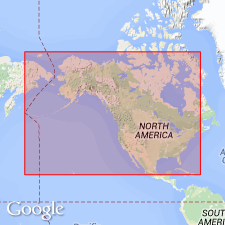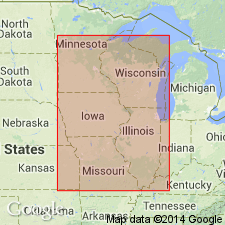
- Usage in publication:
-
- Pleistocene Series
- Modifications:
-
- Age modified
- Overview
- AAPG geologic province:
-
- Cosmopolitan
Summary:
Base of Pleistocene Series is defined in stratotype section at Vrica, Calabria, southern Italy. Vrica section is located 4 km south of Crotone in Marchesato Peninsula. Pliocene-Pleistocene boundary placed at base of marine claystones conformably overlying sapropelic marker bed "e" in Vrica section. Several paleontologic events occur closely above and below boundary including last occurrence of calcareous nannoplankton DISCOASTER BROUWERI (below), last occurrences of foraminifer GLOBIGERINOIDES OBLIQUUS EXTREMUS and nannoplankton CALCIDISCUS MACINTYREI (above), and first appearance of nannoplankton GEPHYROCAPSA OCEANICA (above). Normal polarity zone below marker bed "e" corresponds to Olduvai subchron. Bed "e" can be traced throughout outcrop and distinguished from other sapropelic marker bed by its thickness (about 190 cm) and relative position and can be distinguished from overlying and underlying clay strata. Small geologic map of Vrica area (fig. 2). Figure 3 is measured section showing distribution of fossils. Age of boundary is about 1.64 Ma based on l.67 Ma age for top of Olduvai subchron and sedimentation rate of 310 mm per thousand years for interval between top of Olduvai and top of bed "e."
Source: GNU records (USGS DDS-6; Denver GNULEX).

- Usage in publication:
-
- Pleistocene Epoch*
- Modifications:
-
- Overview
- AAPG geologic province:
-
- Cosmopolitan
Summary:
Pliocene-Pleistocene boundary placed at 1,650,000 yrs. Pleistocene-Holocene boundary placed at 10,000 yrs. Pleistocene divided into: 1) early Pleistocene (1,650,000-788,000 yrs); 2) middle Pleistocene (788,000-132,000 yrs) which can be divided into: early middle (788,000-610,000 yrs), middle middle (610,000-302,000 yrs), and late middle (302,000-198,000 yrs); and 3) late Pleistocene (132,000-10,000 yrs). Glaciations include: 1) pre-Illinoian (1,650,000-302,000 yrs); 2) Illinoian (302,000-132,000 yrs) which can be divided into: early Illinoian (302,000-198,000 yrs) and late Illinoian (198,000-132,000 yrs); 3) Sangamon (132,000-122,000 yrs); and 4) Wisconsin (122,000-10,000 yrs) which can be divided into: "Eowisconsin" (122,000-79,000 yrs), early Wisconsin (79,000-65,000 yrs), middle Wisconsin (65,000-35,000 yrs), and late Wisconsin (35,000-10,000 yrs). Pre-Illinoian is middle middle Pleistocene and older; Illinoian is late middle Pleistocene; and Sangamon and Wisconsin are late Pleistocene. Nebraskan glaciation, Aftonian interglaciation, Kansan glaciation, and Yarmouth interglaciation not used in this chapter and are abandoned in chapter by Hallberg (this vol, p. 11-15).
Source: GNU records (USGS DDS-6; Denver GNULEX).
For more information, please contact Nancy Stamm, Geologic Names Committee Secretary.
Asterisk (*) indicates published by U.S. Geological Survey authors.
"No current usage" (†) implies that a name has been abandoned or has fallen into disuse. Former usage and, if known, replacement name given in parentheses ( ).
Slash (/) indicates name conflicts with nomenclatural guidelines (CSN, 1933; ACSN, 1961, 1970; NACSN, 1983, 2005, 2021). May be explained within brackets ([ ]).

